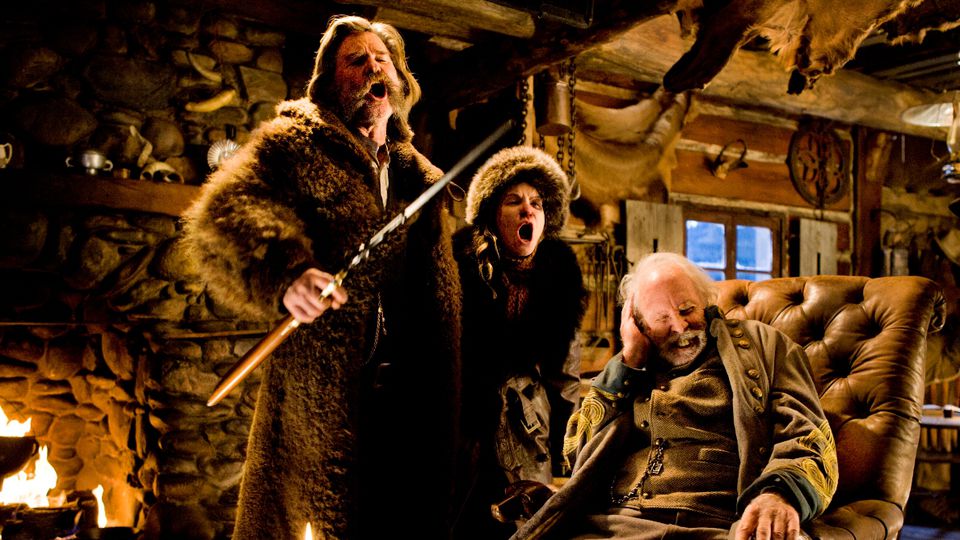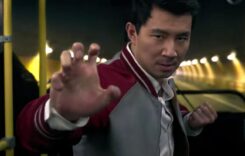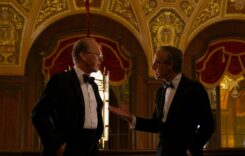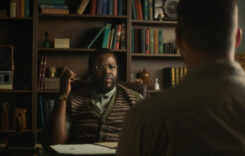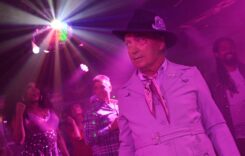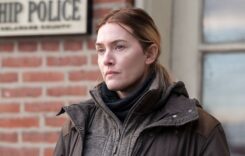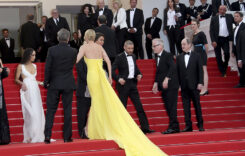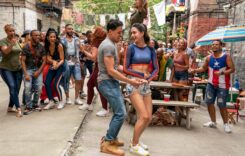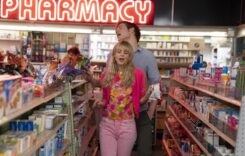JANUARY 19, 2016
I hate beginning a review with the phrase “Back in my day…” evoking the image of me as a cranky old man shaking his fist at clouds from his front-porch rocking chair. But…
Back in my day…
A few times each year, a movie was released as what was called a “roadshow” engagement. It would be shown in only a single theater in a few cities, and you had to buy an advance ticket (which cost an outrageous sum like four dollars!). The film would be shown only once a day (at night) with matinees on Wednesdays and weekends. There would usually be an overture to start the film as well as an intermission. And you’d get a swell souvenir booklet commemorating your day at the movies.
Going to see a roadshow movie was an event, usually because the Hollywood studios would save their most prestigious films for roadshow release. “Lawrence of Arabia” was a roadshow, as was “The Sound of Music” and “Doctor Zhivago,” all of which played in theaters for upwards of a year.
If nothing else, Quentin Tarantino knows his movie history, and as a theater owner himself, he knows roadshows. So when he announced last year that he would present his latest film, “The Hateful Eight,” in a roadshow format, complete with overture and intermission, memories came flooding back. (“The Hateful Eight” is playing at only 100 theaters as a roadshow — most U.S. theaters are showing the film without the overture and intermission.)
Tarantino even shot the movie using 70mm film, a stock rarely used today and filmed it using a super widescreen process called Ultra Panavision 70 which hasn’t been utilized in half-a-century. (The last film to be shot using that aspect ratio was “Khartoum” in 1966.) Given the many widescreen vistas that Tarantino has captured in his past films, making that extra technical effort to capture these Western landscapes added an exciting dimension to “The Hateful Eight.”
And it works, for the film’s first two chapters, at least. (The story is divided into six titled chapters.) The film opens with a snow-covered vista as a stagecoach slowly approaches the camera. Driven by the crusty O.B. (James Parks), the coach carries two passengers — John Ruth, a.k.a.The Hangman (Kurt Russell) who is handcuffed to his prisoner, outlaw Daisy Domergue (Jennifer Jason Leigh), whom Ruth is escorting to her hanging in the next town of Red Rock. A suspicious Ruth allows in a new passenger — bounty hunter Major Marquis Warren (Samuel L. Jackson) who is transporting three dead bounties to Red Rock — and finally a fourth, ex-militiaman Chris Mannix (Walton Goggins), who claims he is about to become the new sheriff of Red Rock.
A sudden blizzard forces the group to seek shelter at Minnie’s Haberdashery, where they encounter four other travelers. Bob (Demian Bichir), a Mexican who is tending the store in Minnie’s absence; Englishman Oswaldo Mobray (Tim Roth), who is the hangman for Red Rock; laconic cowboy Joe Gage (Michael Madsen) who says he’s en route to see his mother, and former Confederate General Sanford Smithers (Bruce Dern), who takes an instant dislike to Union-loving Major Warren.
As he begins to see his lodge-mates settle in to ride out the storm, a perceptive Warren begins to suspect that not everyone is who they claim to be. Those secrets turn deadly, however, when people begin to die mysteriously within the four walls of the cabin. Suddenly, “The Hateful Eight” becomes less of a Tarantino western and more of an Agatha Christie whodunnit, although one with ultra-gory violence and flying N-words. And in the center of it we have Sam Jackson as a frontier Hercule Poirot.
Since the film’s final four chapters take place within the confines of a single room, one questions why Tarantino went to such trouble to use such widescreen devices — the film looks sharp, but it gradually produces diminishing returns.
Every Tarantino film seems to generate its own controversy, though it’s usually some variation of the director’s penchant for explicit violence and/or his liberal use of the N-word. Though that racial slur is prevalent throughout “The Hateful Eight,” the biggest to-do here over the violence — not about how much there is, but against whom it is aimed.
As the only female character in “The Hateful Eight,” the handcuffed Daisy takes an elbow to her head, has her nose broken, has a bowl of hot stew thrown directly into her face and suffers other violent indignities throughout the roadshow’s 187-minute running time. Yes, Daisy usually meets these attacks with strong mocking laughter and contempt, a point that Tarantino and Leigh have repeatedly made while promoting the film.
However, that kind of “strength” is a far cry from the strong female characters that Tarantino, Uma Thurman and Pam Grier made indelible in “Kill Bill” and “Jackie Brown.” In earlier Tarantino work, if a strong woman was violently attacked, she usually had an opportunity to turn the tables on her male attacker and make him pay dearly. Here Daisy has only a little chance for revenge, which she does take, but it does little to lighten the “ick” feeling generated by watching a woman be used as a punching bag for three hours.
Still, there is the usual amount of characteristic Tarantino wit in place here, he has collected an outstanding ensemble of character actors who give their all, and there’s a fabulous musical score by the legendary composer Ennio Morricone.
But there’s something missing in “The Hateful Eight” that was present in the director’s most recent (better) films. In “Inglorious Basterds,” we cheered on Brad Pitt and his merry band of misfits as they took on the hateful Nazis and cheered every violent bit of vengeance. Similiarly, we were there every step of the way with Django as exacted his revenge on the slimy plantation bosses. In “The Hateful Eight,” however, as we watch the body count start to rise, and the blood starts soaking through the floorboards, I found myself asking a question that I have never before asked at a Tarantino film.
Why?
GRADE: C+


